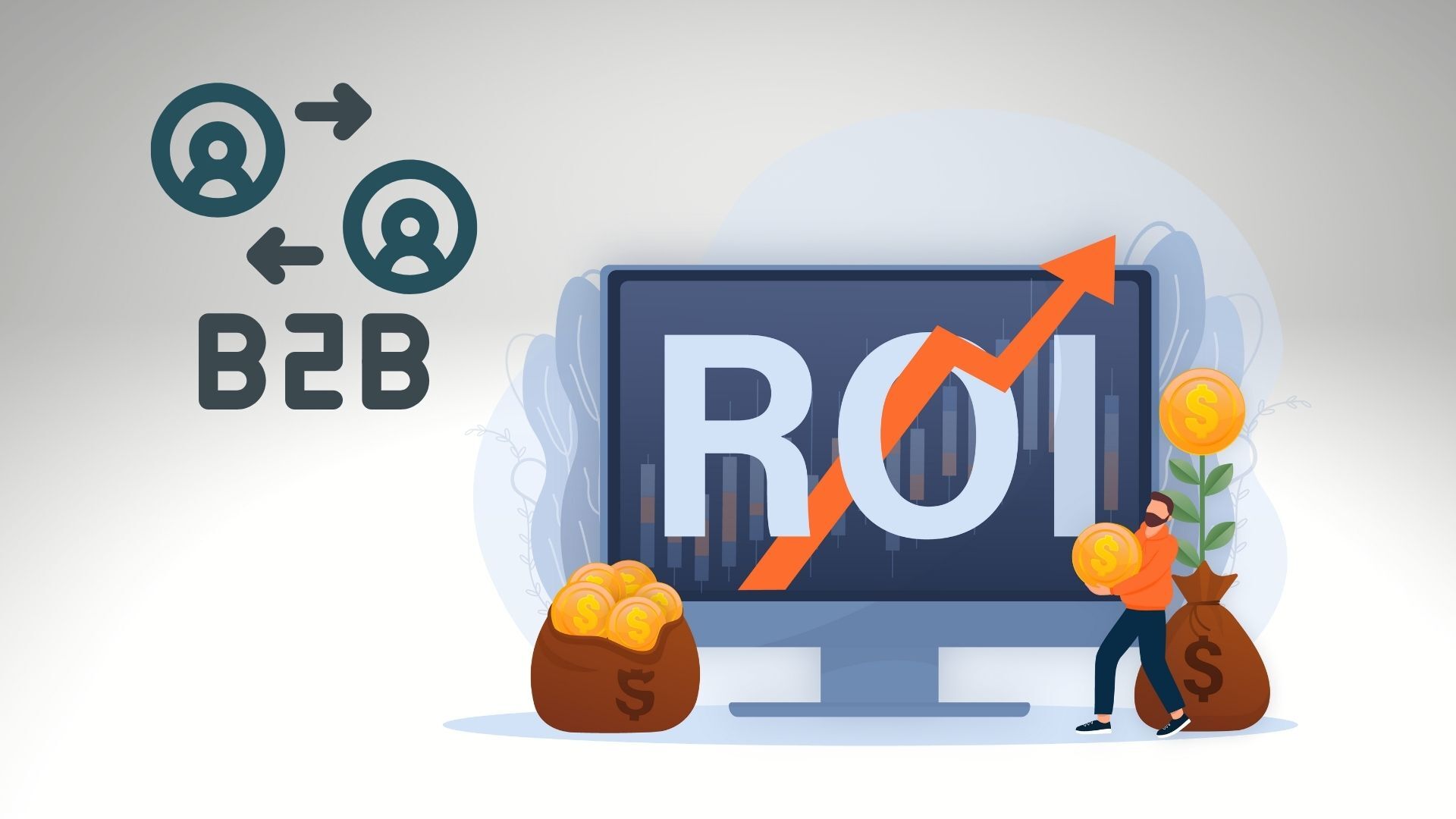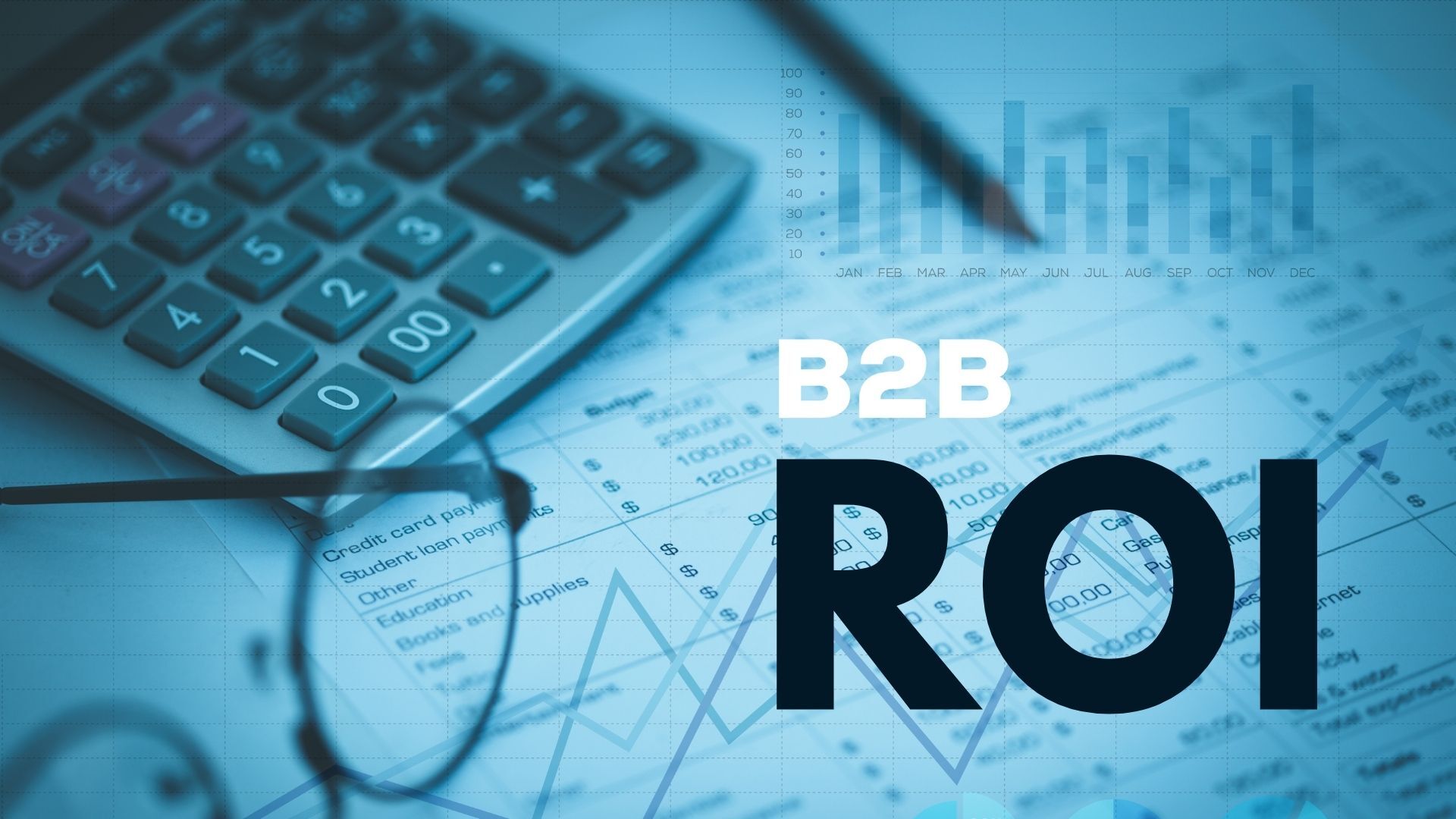How To Calculate ROI in B2B Marketing: A Step-by-Step Guide

In B2B marketing, where deals take time to close and involve multiple decision-makers, knowing your return on investment (ROI) is key. It helps you understand how much revenue your marketing activities actually bring in compared to how much you spend. By tracking ROI, you can see which campaigns drive the best results, which channels deserve more budget, and how marketing contributes to overall business growth.
This guide explains what ROI means in a B2B context, how to calculate it step by step, and how to handle complex factors like multi-touch attribution, renewals, and offline influence.
Key Takeaway:
Calculating ROI in B2B marketing helps you understand how effectively your campaigns turn spending into real revenue. By tracking all costs, using consistent attribution, and aligning data with sales results, you can measure marketing’s true impact on business growth. A clear ROI framework not only proves value but also guides smarter budgeting and long-term optimization.
What Is ROI in B2B Marketing?
ROI is a measure of how profitable your marketing activities are. In B2B marketing, it connects everything you put in, budget, tools, content, and labor, to the revenue your campaigns generate through new customers or renewals.
Unlike Return on Ad Spend (ROAS), which focuses only on advertising results, ROI takes a broader view. It includes all campaign-related costs and gives a more accurate picture of marketing’s true financial impact. This is especially important in B2B, where buying cycles are longer, deals are larger, and multiple channels work together to influence a purchase.
If you want to maximize ROI and get clearer insights into what drives revenue, partnering with a data-driven marketing agency can make all the difference. The right agency can help you track performance, refine attribution, and uncover the channels delivering the highest returns.
Basic Formula to Calculate ROI
ROI = (Net Profit from Campaign ÷ Total Marketing Investment) × 100%
To find Net Profit, subtract your total marketing costs from the revenue generated by the campaign. Be sure to include all expenses—ad spend, content creation, software, agency fees, staff time, and other resources. This ensures your ROI reflects the campaign’s real profitability rather than just quick wins.
Example:
If your campaign brought in $250,000 in revenue and cost $100,000 to run:
- Net Profit = $250,000 – $100,000 = $150,000
- ROI = ($150,000 ÷ $100,000) × 100 = 150%
That means for every dollar invested, your campaign earned $1.50 in profit.
Steps for Calculating ROI
Identifying all campaign costs. These include direct expenses like ads, content production, and event fees, as well as indirect costs such as team salaries, software subscriptions, and shared tools like CRMs. Separate one-time costs (like creating a video) from ongoing costs (like monthly analytics tools) for a clearer view of your investment.
Next, calculate the revenue that can be tied directly to the campaign. Use data from your CRM or marketing automation platform to see which deals were influenced by campaign activity. Attribution models help determine how credit is assigned: first-touch models credit the first interaction, last-touch models credit the final one, and multi-touch models spread credit across several interactions. Only include revenue from closed deals, not opportunities still in progress.
Once you know the total revenue and costs, subtract costs from revenue to find net profit, then plug those numbers into the formula. For example, if a campaign costs $120,000 and generates $300,000, your ROI is 150%, a strong indicator of success.
Advanced Considerations
In B2B marketing, ROI can be influenced by many factors beyond direct revenue. To get a fuller picture, marketers often measure incremental lift, the extra revenue generated by a campaign compared to what would have happened without it. For subscription-based businesses, connecting Customer Acquisition Cost (CAC) with Customer Lifetime Value (CLV) provides a deeper understanding of long-term profitability.
You can also track metrics like payback period (how long it takes to earn back your investment) or use Net Present Value (NPV) to factor in the time value of money. Monitoring conversion rates, deal velocity, and brand awareness trends can also show how marketing drives value beyond immediate revenue.

Tools and Techniques for Measuring ROI
Accurate return on investment tracking begins with high-quality data. CRMs and marketing automation tools, such as Salesforce, HubSpot, or Microsoft Dynamics, help link campaigns to closed deals. Analytics platforms such as Google Analytics 4, Dreamdata, or Segment provide insight into cross-channel performance. Business intelligence tools like Tableau, Looker, or Power BI bring it all together, showing how marketing costs translate into revenue in real time.
Some teams also use custom dashboards or calculators to visualize campaign performance by channel, attribution model, or time period.
Common Challenges
Calculating ROI in B2B isn’t always straightforward. Long sales cycles mean that revenue from a campaign might not appear until months later. Multi-touch journeys, where prospects interact with ads, emails, events, and sales reps, make it tricky to assign credit fairly. Offline interactions like phone calls or conferences can also go untracked if not properly logged.
Data quality is another challenge. Missing UTMs, inconsistent naming, or duplicate leads can distort your numbers. Maintaining clean, standardized data and clear attribution rules helps avoid errors and ensures trustworthy reporting.
Tips to Improve Accuracy
To get reliable ROI results, define your objectives and KPIs before launching a campaign. Standardize tracking parameters, log all touchpoints (including offline ones), and agree with sales and finance on how revenue and costs will be counted.
Start with a simple rule-based attribution model, then move to more advanced, data-driven models as your reporting matures. Track results by cohort, grouping leads and deals by the time they entered your funnel, to see long-term impact. When possible, run controlled experiments or holdout tests to measure true incremental gains.
Review results with your finance team regularly to ensure ROI calculations align with actual booked revenue.
Conclusion
Measuring ROI in B2B marketing isn’t just about crunching numbers. It’s about understanding how marketing drives real business growth. By combining the simple ROI formula with supporting metrics like CAC, CLV, and pipeline velocity, you can get a clear picture of both short-term performance and long-term value.
With accurate data, clear definitions, and collaboration between marketing, sales, and finance, ROI becomes more than a report. It becomes a strategic tool for smarter spending and sustainable growth.


